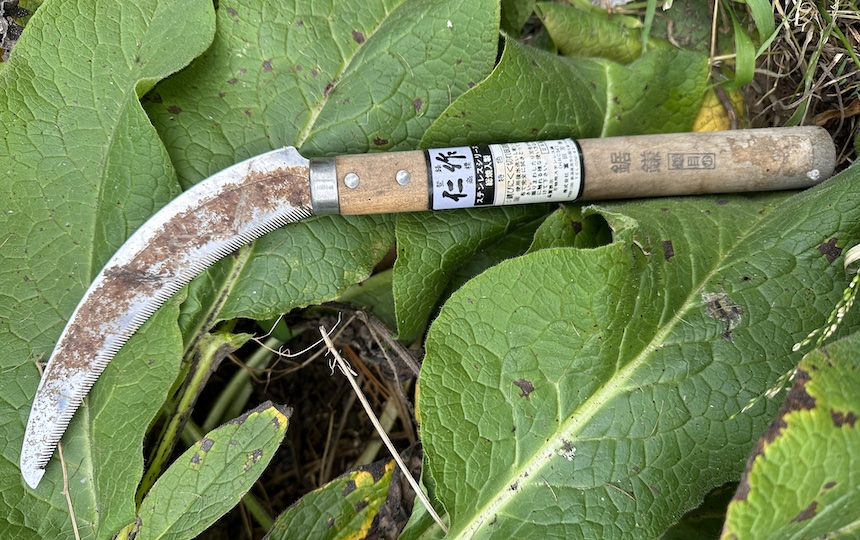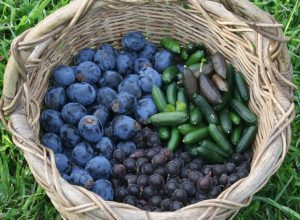The Japanese sickle is an affordable, lightweight, and essential piece of kit for any gardener who is harvesting, chopping down plants for composting, mulching or cover crops.
My Japanese sickle is an important member of the close-knit family of tools I call my old trusties. These include a hand trowel, secateurs, a hori hori (part trowel, part knife), scissors and a hand fork. They all live in my tool caddy, which I carry with me when I am gardening and means I no longer lose my tools to the far corners of the vegie patch.
While it might not be as regular a friend as a trowel or secateurs, for the jobs that it does do, there is no other alternative. The Japanese hand sickle has a curved blade that’s 17-centimetres long with serrations on the inside of the curve. It is perfect for when you need to clear areas of soft-stemmed bushy plants, such as comfrey, mint, grains, cover crops and green manure crops.
It is best used for plants that you want to cut back, keeping the base or root of the plant in the soil, and for plants that have many stems. Running the sharp sickle through is far less time consuming than cutting every stem by hand with a pair of secateurs, or even trying to use two hands on a pair of hedge trimmers to achieve the same outcome.
When I am harvesting my comfrey to add to and accelerate my compost or to make a comfrey tea, I hold the end of the leaves in one hand and just come in and cut the stems of the plant cleanly near the root.
Not only does the sickle save me time when I’m collecting comfrey like this, but it saves me having to handle the plant with its prickly stems and leaves too closely. It also saves me having to bend over too much. It’s great also for when I’m chopping and dropping cover crops, allowing the plant material to act as a mulch for the soil and break down in situ.
The 22-centimetre long handle is made from lightweight timber to which the thin steel blade is riveted on and the whole piece feels strong and sturdy. The blade is prone to rust so applying a drop of oil occasionally and rubbing it in will help prevent that, as will making sure you always dry it before putting it away. Lightly sanding and oiling the handle over time will keep it from splintering, too.
One of nine types of sickles available through Urban Revolution, the Japanese Sickle is an affordable, lightweight, and essential piece of kit for any gardener who is harvesting, chopping down plants for composting, mulching or cover crops. They come in a range of shapes, lengths and blade sizes depending on the job you have at hand.









